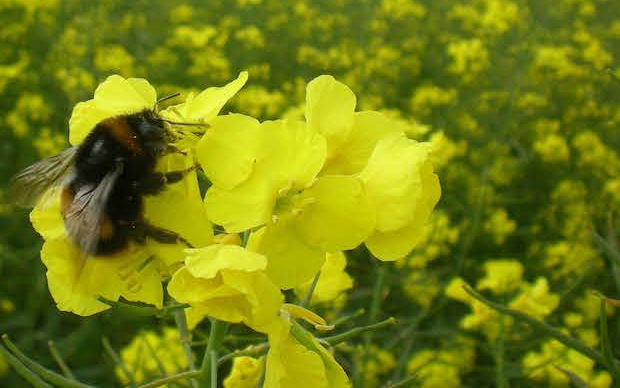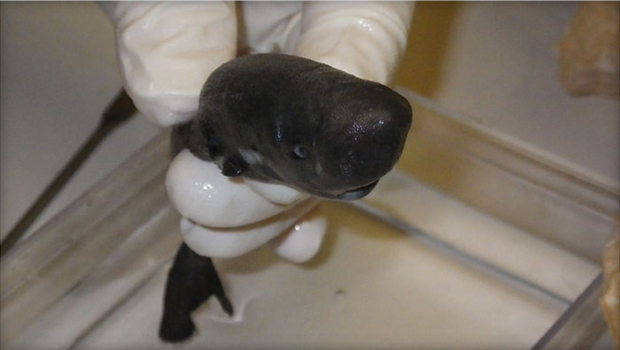Weird science news of the week
Brian Kubicki has been studying amphibians in Costa Rica for 17 years, dedicating thousands of hours to fieldwork in the country's tropical rainforests. But he probably never expected to meet a celebrity frog in the process.
In a study published earlier this year in the journal Zootaxa, the founder of the Costa Rican Amphibian Research Center described a new species of frog, Hyalinobatrachium dianae. With its uniformly bright lime green skin and big white bug eyes with dark centers, it looks uncannily like Kermit the Frog.
Disney released an official Q+A with Kermit the Frog Thursday, exploring his feelings about this newly discovered doppelgänger hopping on his celebrity.
Asked what he would tell Hyalinobatrachium dianae if he could tell him anything, the famous Muppet said, "Shorten your name if you want to make it in show business. Maybe something catchy like Diane Glass or Kermina Kardashian."
He also admitted that "Googly eyes run in our family."
Read the full story here.
Next...
Bees getting a buzz off pesticides?
Just as smokers become addicted to cigarettes, bees might be getting hooked on a pesticide blamed by some scientists for a steep decline in their population.
That was the surprising finding from one of two studies in Nature Wednesday that examined the impact on several bee species of neonicotinoids, a class of commonly used pesticides that are used on corn and cereal crops as well as many types of fruits and vegetables.
In one study, Newcastle University's Geraldine Wright and her colleagues found that buff-tailed bumblebees and honeybees preferred a sugar solution containing the three most common neonicotinoid pesticides - which contain nicotine - to a solution without them.
Read the full story here.
Next...
This is what taste looks like
The human tongue contains more than 2,000 taste buds, which can distinguish between the five main tastes: salty, sweet, sour, bitter and umami. But understanding the relationship between taste buds and taste cells has always been difficult because the cells within each bud are affected by a wide array of taste molecules and stimulants.
Now for the first time, an international team of researchers has imaged the activation of single taste cells in a taste bud on the tongue -- and it looks awesome.
The team now hopes to develop a way to monitor the brain while imaging the tongue to track how the cellular signals are processed and transmitted to the nerves that are connected to the brain.
Read the full story here.
Next...
Jaws + kangaroo = pocket shark
Think Jaws meets a kangaroo, with maybe a touch of cute kitten, and you've got the aptly named pocket shark - the newest and rarest species found off the U.S. coast.
Surprised scientists found a tiny, young version of the extraordinarily rare shark that was fished out of the deep Gulf of Mexico in 2010 with lots of other creatures in a government research trip. The dead specimen spent more than three years in a giant freezer waiting to be identified and turned out to be only the second of its species ever seen.
"It's cute," said Tulane University biologist Michael Doosey, who co-authored a study in a zoological journal identifying the shark. "It almost looks like a little whale."
Read the full story here.
Next...
Passwords in pill form?
To Jonathan LeBlanc, global head of developer advocacy at PayPal, the problem is simple: "Passwords are not secure, they need to be replaced."
The solution? According to LeBlanc, it's time to start seriously considering a selection of audacious alternatives. Some startups are developing tools to recognize your eyes or face as your login credentials, and Google has started toying with a smart contact lens that measures tear glucose. In a presentation he gives called "Kill All Passwords," LeBlanc pushes it even further, to ideas such as wearable circuit board tattoos, brain chip implants and password pills that effectively unlock your devices from inside you.
If it all sounds a little sci-fi, that's because, LeBlanc admits, some of it is. "I ground a lot of my talks in reality," he told the Wall Street Journal, "but toward the end of the presentation things get a little strange."
Read the full story here.
Next...
170-year-old champagne found in shipwreck
Every wine connoisseur knows the value of an aged wine, but few get the opportunity to sample 170-year-old Champagne from the bottom of the sea.
In 2010, divers found 168 bottles of bubbly while exploring a shipwreck off the Finnish Aland archipelago in the Baltic Sea. When they tasted the wine, they realized it was likely more than a century old. A chemical analysis of the ancient libation has revealed a great deal about how this 19th-century wine was produced.
"After 170 years of deep-sea aging in close-to-perfect conditions, these sleeping Champagne bottles awoke to tell us a chapter of the story of winemaking," the researchers wrote in the study, published Monday in the journal Proceedings of the National Academy of Sciences.
Wine-tasting experts described the aged Champagne as "grilled, spicy, smoky and leathery, together with fruity and floral notes."
Read the full story here.




